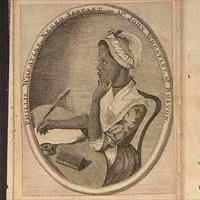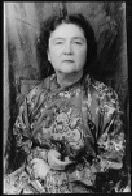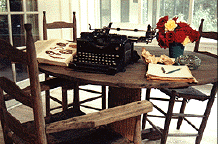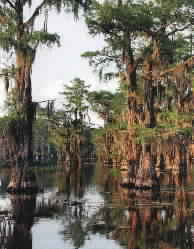|
|
|
|
|
|
|
|
|
|
|
|
|
|
|
|
|
|
|
|
|
|
|
|
|
|
|
|
|
|
|
|
|
|
|
|
|
|
|
|
|
|
|
|
|
|
|
|
|
|
|
 |
 |
 |
 |
 |
 |
 |
 |
 |
 |
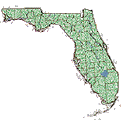 |
|
 |
 |
 |
 |
 |
 |
 |
 |
 |
 |
 |
 |
|
|
 |
 |
 |
 |
 |
 |
 |
 |
 |
 |
 |
 |
 |
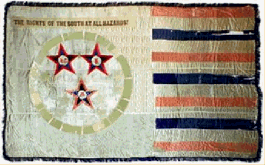 |
|
 |
|
|
|
 |
 |
 |
| **Helen Broward, of Broward's Neck in Duval County, and other southern women who supported the secessionist cause made and presented this flag to Florida Governor Madison S. Perry. It was unfurled by Governor-elect John Milton on the east porch of the state capitol when the delegates signed Florida's Ordinance of Secession on January 11, 1861. The three large stars represent the first three states to leave the Union: South Carolina, Mississippi, and Florida. The flag's motto, "The Rights of the South at All Hazards!", echoes the uncompromising position of southern supporters on the eve of the Civil War. The banner reportedly hung above the speaker's desk in the Florida House of Representatives throughout the war. |
| At the war's end, the banner still hung in the capitol and reportedly was taken as a trophy by a Union army officer during the postwar occupation of the building. It is recorded that this officer later felt guilty about taking the banner and gave it to a Mrs. Hasson, the wife of a military doctor, to return it to the state. The Hassons moved to the western U.S. shortly after this incident. It was not until 1911 that Mrs. Hasson sent the flag to a Florida member of the United Daughters of the Confederacy, who then returned it to the State of Florida.** |
|
 |
|
|
 |
 |
 |
 |
 |
 |
 |
|
|
 |
 |
 |
 |
 |
 |
 |
 |
 |
 |
 |
 |
 |
 |
 |
|
|
 |
 |
 |
 |
 |
 |
 |
 |
 |
 |
 |
 |
 |
 |
 |
|
|
 |
 |
 |
 |
 |
 |
 |
 |
 |
 |
 |
 |
|
|
 |
 |
 |
 |
 |
 |
 |
 |
 |
 |
|
|
 |
 |
 |
 |
 |
 |
 |
 |
 |
 |
 |
 |
 |
 |
|
|
 |
 |
 |
 |
 |
 |
 |
 |
 |
|
|
 |
 |
 |
 |
 |
 |
 |
 |
 |
 |
 |
 |
 |
 |
 |
 |
|
|
 |
 |
 |
 |
 |
|
 |
 |
|
|
|
 |
 |
 |
 |
|
|
|
 |
 |
 |
| A Land Remembered |
| By Patrick D. Smith |
|
| The story of an unforgettable family's rise to fortune- from the guns of the Civil War to the glitter and greed of the Florida Gold Coast today. You'll never forget these characters. |
|
| |
|
| The MICKLERS Of Florida |
| By Patricia Ferguson Mickler |
|
| This book gives the earliest account of the Micklers in America in the mid 1700's. The Micklers first settled in South Carolina. This book gives a most interesting and accurate account of this Mickler family in Florida. I am proud that my Mickler ancestors are included in this book. |
|
|
| Florida's Past |
| By Gene M. Burnett |
|
| A series of books that contain a collection of short stories of little known events that helped shape the history of Florida. |
|
|
| Author: Lawrence Will |
|
| Lawrence is a true cracker from the Okeechobee area that big ol' lake smack dab in the center of the state. He wrote a great book about one of Florida's worst disasters ever to hit this state. The great Hurricane of 1928. He tells the story from a front row seat. Read anything you can by this cracker! |
|
|
| Forty Years In The Everglades |
| By Calvin R. Stone |
|
| 45 true stories about the authors adventures hunting in the Florida Glades from 1930's through the 1970's. |
|
|
| My Florida |
| By Ernest Lyons |
|
| Ernest was raised in the Stuart, Florida area on the east coast. I loved his view of his Florida and enjoyed his wonderful writing style. |
|
| |
| INDIGO |
| By Latrell Mickler |
| Latrell Papy Mickler has written, INDIGO. It is a wonderful read! This book of historical fiction outlines the story of the Menorcans and provides a wonderful picture of St. Augustine and the state during this time period. |
| ....Los Floridanos Society |
| Florida's First Spanish Families |
|
| Lemon City |
| By Thelma Peters |
|
| Dr. Peters presents a factual account of a rougher-life style of bygone days of a once-thriving pioneer Miami community. |
| |
|
|
|
|
|
| |
|
|
 |
|
 |
 |
 |
 |
|
|
 |
 |
 |
|
 |
 |
 |
 |
 |
|
|
|
 |
 |
 |
| An engraving of slave poet Phyllis Wheatley from her book, |
| Poems on Various Subjects, Religious and Moral |
 |
|
|
|
 |
 |
 |
 |
 |
 |
 |
 |
 |
 |
 |
 |
 |
 |
 |
 |
 |
 |
 |
 |
 |
 |
|
 |
 |
 |
 |
 |
 |
 |
 |
 |
 |
 |
 |
 |
 |
 |
|
|
|
 |
 |
 |
 |
 |
 |
|
|
|
 |
 |
 |
| As she answered the door, she held in her hand a copy of Marjorie Kinnan Rawling's "The Yearling." "That's a great book," she remarked, as she laid the volume on the library table in the front hall. "So true to the 'cracker' life and customs. And I remember the storm she tells about." |
| "Ruby Beach," |
| interview with Mrs. Eleanor Scull, |
| Jacksonville, Florida, |
| Rose Shepherd, interviewer, April 11, 1939. |
| American Life Histories, 1936-1940 |
|
|
 |
|
|
 |
 |
 |
 |
 |
|
 |
 |
 |
 |
 |
 |
 |
|
|
|
 |
 |
 |
| Marjorie Kinnan Rawlings Typewriter |
| at her Cross Creek Home |
 |
|
|
|
 |
 |
 |
 |
 |
 |
 |
 |
 |
 |
 |
 |
 |
 |
 |
 |
 |
 |
|
|
 |
 |
 |
 |
 |
 |
 |
 |
 |
 |
 |
 |
 |
 |
 |
 |
 |
|
|
|
 |
 |
 |
| Florida, as I know it! - Greta |
 |
|
|
 |
 |
 |
 |
 |
 |
 |
 |
 |
 |
 |
 |
 |
 |
 |
 |
 |
 |
 |
 |
 |
|
 |
 |
 |
 |
 |
 |
 |
 |
 |
 |
 |
 |
 |
 |
 |
 |
 |
 |
 |
|
|




